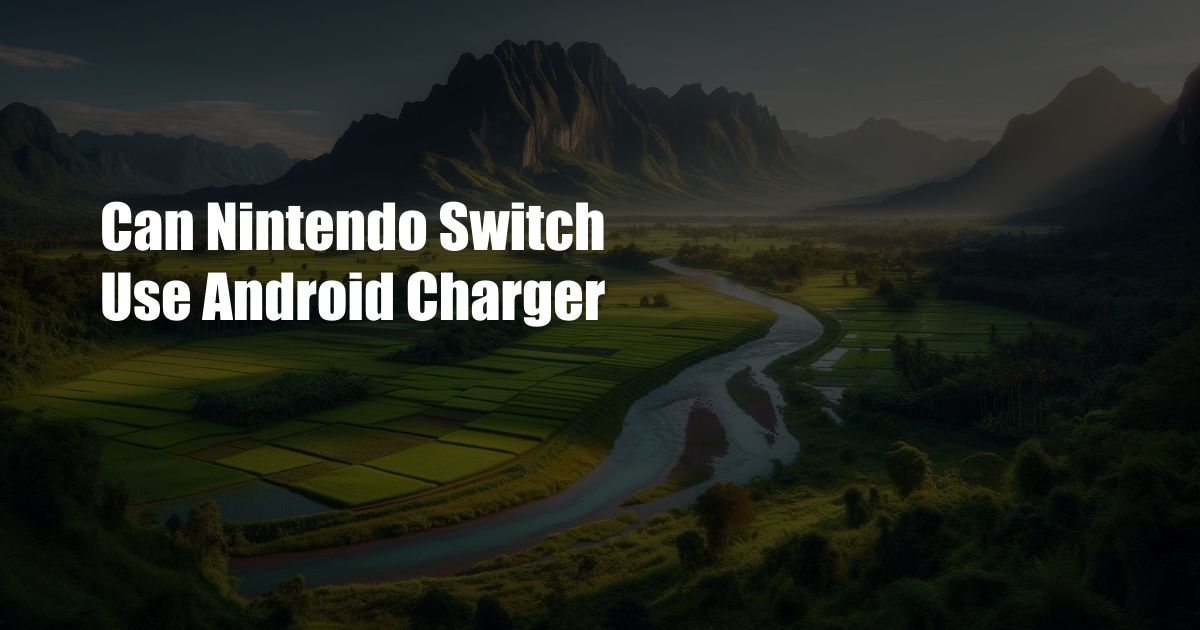
Can Nintendo Switch Use an Android Charger?
Have you ever wondered if you could use an Android charger to power your Nintendo Switch? It seems like a convenient solution, especially if you’re on the go and don’t have access to a dedicated Switch charger. In this article, we’ll explore the ins and outs of using an Android charger with your Nintendo Switch and provide some expert tips and advice to keep your device safe.
Before we dive into the details, let’s make one thing clear: using an Android charger to charge your Nintendo Switch is not ideal and may potentially damage your device in the long run. The Nintendo Switch requires a specific type of charger that delivers the correct voltage and amperage to power the console and charge its battery efficiently. Using an Android charger that does not meet these specifications can lead to overcharging, overheating, or even damage to the Switch’s internal components.
Understanding the Differences Between Chargers
To understand why using an Android charger is not recommended, it’s important to know the differences between the two types of chargers. Nintendo Switch chargers typically output 5 volts (V) and 1.5 to 2.6 amps (A) of power, while Android chargers usually output 5V and 1A to 2A of power. The higher amperage of the Switch charger allows it to charge the console’s battery more quickly and efficiently.
Using an Android charger with a lower amperage may result in slower charging times. Additionally, some Android chargers may not provide enough power to charge the Switch at all. In some cases, using an incompatible charger can even damage the Switch’s battery or other internal components.
Tips for Safely Charging Your Nintendo Switch
If you find yourself in a situation where you need to charge your Nintendo Switch using an Android charger, there are a few precautions you can take to minimize the risk of damage:
- Use a reputable Android charger: Choose a charger from a well-known brand that meets industry safety standards. Avoid using cheap or knock-off chargers.
- Check the amperage: Ensure that the Android charger you’re using provides at least 1.5A of power. Chargers with higher amperage ratings are preferred.
- Monitor the charging process: Keep an eye on the Switch while it’s charging. If you notice any unusual behavior, such as excessive heat or the console not charging at all, stop charging immediately and use a dedicated Switch charger.
Conclusion
While it’s possible to use an Android charger to charge your Nintendo Switch in a pinch, it’s important to understand the potential risks involved. For the safety and longevity of your device, it’s always best to use a dedicated Nintendo Switch charger. If you need to use an Android charger, be sure to follow the precautions outlined in this article to minimize the risk of damage.
So, the next time you’re out and about and need to charge your Switch, make sure you have the right charger on hand. Your console will thank you for it!
Frequently Asked Questions (FAQs)
Q: Is it safe to use any Android charger with my Nintendo Switch?
A: No, not all Android chargers are safe to use with the Nintendo Switch. It’s important to use a charger that meets the Switch’s power requirements and is from a reputable manufacturer.
Q: Can I use an Android charger to charge my Switch Pro Controller?
A: Yes, you can use an Android charger to charge your Switch Pro Controller. The Pro Controller uses a standard USB-C charging port, which is compatible with Android chargers.
Q: What happens if I use an Android charger that doesn’t meet the Switch’s power requirements?
A: Using an Android charger with insufficient power may result in slower charging times or may not charge the Switch at all. In some cases, using an incompatible charger can damage the Switch’s battery or other internal components.
Q: What are some good tips for extending the life of my Nintendo Switch battery?
A: To extend the life of your Nintendo Switch battery, avoid letting it completely discharge, charge it regularly, and avoid exposing it to extreme temperatures.
 Azdikamal.com Trusted Information and Education News Media
Azdikamal.com Trusted Information and Education News Media